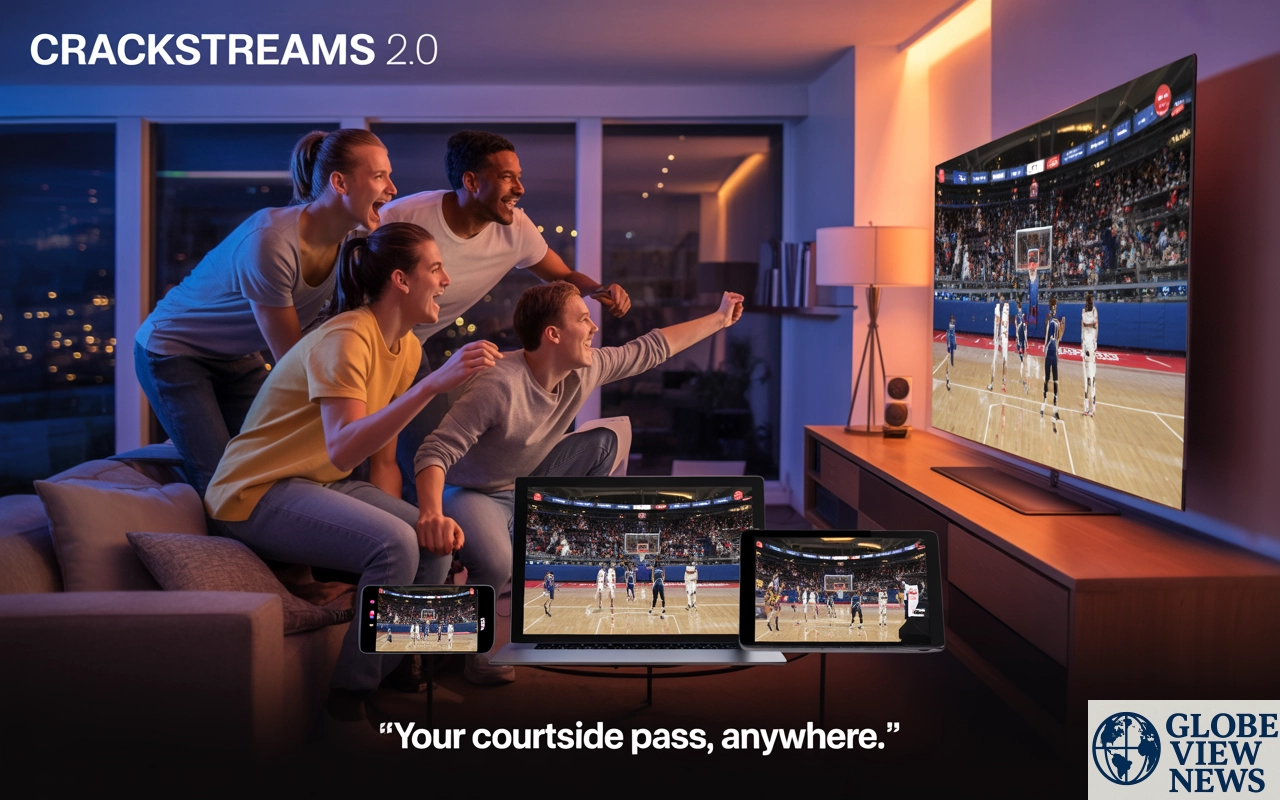In recent years, Crackstream 2.0 has emerged as a significant figure in the world of online sports streaming. Built as a successor to its controversial predecessor, this platform has drawn attention for offering real-time access to major sporting events, from the NFL and NBA to UFC and international soccer. As digital consumers demand more flexibility and affordability, the rise of such streaming alternatives reflects shifting paradigms in how audiences engage with live sports content.
This article explores the origins, features, legality, public reception, and broader implications of Crackstream 2.0, analyzing why it has sparked debate among fans, broadcasters, and regulators alike.
Before diving into the specifics of Crackstream 2.0, it’s essential to understand the larger landscape of online sports streaming. Traditional cable television, once the primary medium for live sports, has steadily lost ground to internet-based platforms. Viewers increasingly expect the ability to watch games on-demand, across devices, and without the high costs associated with cable packages.
This demand gave birth to services like ESPN+, DAZN, Peacock, and regional sports networks offering subscriptions. However, these legal platforms often come with geographical limitations, content blackouts, or steep monthly fees, pushing many fans to explore unofficial options for broader access.
Enter Crackstream 2.0—a community-driven platform designed to fill that gap by offering unrestricted, real-time access to live games from various leagues and sports categories.
Crackstream 2.0 is a revamped online portal that provides streaming links to live sports events. Unlike subscription-based platforms, it typically allows users to access streams for free. The platform doesn’t host the content directly but aggregates and shares third-party links, acting as a directory for viewers.
It became especially popular during peak sports seasons when fans were unable or unwilling to pay for multiple subscriptions. The appeal lies in its simplicity—select the sport, choose the match, and click a link to start streaming.
However, this simplicity also conceals a complex web of legal, ethical, and technological concerns.
One of the most controversial aspects of it is its ambiguous legal status. While the platform claims not to host or store any copyrighted material, its function as a link aggregator places it in a precarious legal position. According to U.S. copyright law, facilitating access to pirated content can be considered contributory infringement.
Authorities have taken action against similar sites in the past, resulting in shutdowns, domain seizures, and even arrests. However, platforms like Crackstream 2.0 often re-emerge under new domains or proxies, making them difficult to eliminate permanently.
Many legal analysts argue that the digital loopholes exploited by these platforms reflect outdated copyright laws that fail to address the nuances of modern internet use.
Despite its legal issues, the popularity of Crackstream 2.0 is driven by user experience. The platform is typically accessible without any login, registration, or subscription. This ease of use, combined with high-definition streams and minimal buffering, makes it an attractive option for fans worldwide.
Mobile responsiveness, integration with smart TVs, and regular updates to links contribute to the platform’s ongoing usability. Additionally, the presence of community chats and viewer feedback features adds an interactive element often missing from official broadcast services.
While pop-up ads and occasional downtime are common complaints, many users accept these inconveniences as a fair trade-off for free access to premium content.
The ethics of using platforms like Crackstream 2.0 are hotly debated. On one hand, fans argue that sports should be accessible to everyone, especially events broadcast on public television in some countries but locked behind paywalls elsewhere. They see platforms like this as a democratizing force.
On the other hand, leagues, broadcasters, and advertisers lose revenue every time a viewer chooses an unofficial stream. This loss can trickle down, affecting player salaries, team budgets, and even grassroots development programs.
Some sports professionals have publicly condemned piracy, emphasizing that it undermines the entire ecosystem of professional sports. The dilemma, then, is whether the right to access should outweigh the right to monetize content.
Technology has played a dual role in the rise of Crackstream 2.0. Advanced peer-to-peer streaming, content delivery networks (CDNs), and mirror sites have allowed platforms to remain live despite repeated takedown efforts. At the same time, content owners have invested in anti-piracy tools, watermarking, and AI-powered detection systems to identify unauthorized streams in real-time.
The battle between these opposing forces resembles a digital arms race, with each side innovating to outmaneuver the other. As encryption techniques improve and internet bandwidth increases, the ability of platforms like Crackstream 2.0 to deliver seamless content will only grow stronger—unless legal enforcement can keep pace.
While its core user base is primarily in North America and Europe, Crackstream 2.0 has seen growing traction in regions where access to official broadcasts is limited or unaffordable. In countries where licensing rights are restricted, this platform offers an alternative for fans who would otherwise miss out on major events.
Local governments have varied responses to such platforms. In some cases, authorities prioritize the enforcement of intellectual property laws. In others, enforcement is lax or nonexistent, especially when platforms operate outside national jurisdictions.
This lack of uniformity allows Crackstream 2.0 and similar services to maintain a presence across multiple regions with minimal disruption.
Contrary to popular belief, many of these platforms do not operate purely out of altruism. Crackstream 2.0 typically earns revenue through display advertising, affiliate marketing, and sometimes cryptocurrency mining scripts embedded in its pages.
Pop-up ads and redirects are common monetization tools, although they often lead to security risks for users. Some versions of the site also promote VPN services or betting platforms in exchange for commissions.
This semi-commercial model reveals the paradox: while the platform is positioned as a free alternative to paid services, it still operates within a profit-driven framework—albeit one that skirts legal boundaries.
Using platforms like Crackstream 2.0 carries inherent risks. The absence of security certifications, combined with the presence of intrusive ads, makes these sites breeding grounds for malware and phishing attempts. Users who click on rogue links or allow browser notifications may unknowingly compromise their personal data or devices.
Cybersecurity experts recommend using ad blockers, VPNs, and anti-malware software if accessing such platforms—though they also warn that these measures do not eliminate all risks. The question of whether a free game is worth the potential security threat is one that users must answer for themselves.
Enforcement against sites like Crackstream 2.0 is complicated by their decentralized and international nature. Domains are frequently registered under aliases or through privacy-shielded services, while hosting may occur in countries with limited enforcement cooperation.
Even when one version of the site is taken down, clones or mirror sites quickly take its place. This game of digital whack-a-mole has frustrated copyright enforcers and encouraged content creators to explore alternative strategies—such as offering more affordable, flexible legal options.
For fans wary of the legal and security risks associated with platforms like Crackstream 2.0, there are legitimate alternatives. Services like ESPN+, Hulu + Live TV, Sling TV, and YouTube TV provide extensive sports coverage at various price points.
Moreover, many sports leagues now offer their own streaming packages—like NFL Game Pass, NBA League Pass, and UFC Fight Pass—allowing fans to pay only for the content they care about.
While these services still require a financial commitment, they offer reliability, quality, and legality that unauthorized platforms cannot match.
Regardless of its legal status, Crackstream 2.0 has undeniably shaped public expectations around sports consumption. It reflects a broader cultural shift toward on-demand, unrestricted digital access. As younger generations grow up with smartphones and smart TVs, the traditional TV model continues to lose relevance.
This cultural evolution places pressure on broadcasters and leagues to innovate. More flexible pricing models, global access, and improved user interfaces are no longer optional—they’re expected.
Crackstream 2.0, while unofficial, has played a role in pushing the sports entertainment industry toward modernization. Whether its legacy will be seen as pioneering or parasitic depends on one’s perspective.
In conclusion, Crackstream 2.0 occupies a contentious space in the digital media landscape. For fans, it offers unparalleled access to live sports content without the burden of costly subscriptions. For broadcasters and rights holders, it represents a challenge to both revenue and regulatory control.
The platform has thrived due to a combination of technological savvy, legal ambiguity, and cultural demand. However, it also comes with ethical questions, legal risks, and cybersecurity concerns that users must navigate.
Whether it continues to grow or eventually succumbs to increased enforcement remains to be seen. What is clear is that the digital habits shaped by platforms like Crackstream 2.0 will continue to influence how sports are consumed, monetized, and regulated in the years ahead.

